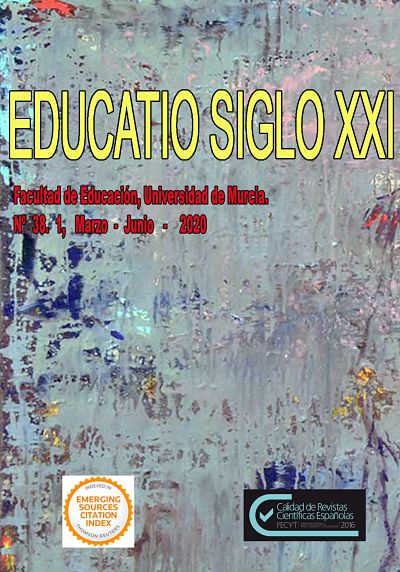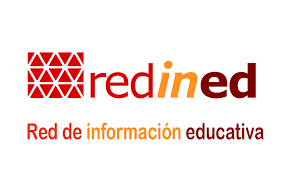Actitudes de los escolares ante la llegada de población migrante: Estudio comparativo y aproximación al desarrollo de buenas prácticas educativas
Resumen
Algunos estudios señalan que los grupos sociales más próximos o en contacto con población migrante pueden desarrollar prejuicios, tanto explícitos como más sutiles que los que se generan entre poblaciones en las que el contacto con miembros de otras culturas es todavía poco significativo (Retortillo y Rodríguez, 2008; Cea D’Ancona, 2009; Checa y Arjona, 2011). Este trabajo tiene como objetivos conocer qué opinan y cuáles son las actitudes de los escolares ante la llegada de migrantes a las aulas y a otros contextos cercanos. Se han comparado dichas opiniones y actitudes en dos zonas españolas con distinta trayectoria en la presencia de migrantes, Salamanca y Murcia; analizando las posibles diferencias en dichas actitudes, atendiendo también al sexo y el nivel educativo. La metodología incluye un estudio de carácter comparativo con una primera aproximación descriptiva, mediante la aplicación de un cuestionario. Los resultados indican la percepción generalizada del trato inadecuado que recibe el colectivo migrante, siendo las escolares quienes lo perciben en mayor medida. Con ciertos matices, la zona geográfica no es una variable que tenga importancia a la hora de considerar la influencia en clase de migrantes, como tampoco lo es el nivel educativo. Aunque las actitudes positivas son más frecuentes entre los escolares de Educación Primaria. El estudio finaliza apuntando algunas líneas de actuación educativa que fomenten la interacción y la convivencia positiva en el centro escolar.
Descargas
-
Resumen1229
-
PDF850
Citas
Aguado, T (2005). La educación intercultural en la práctica escolar. Investigación en el ámbito español. XXI, Revista de Educación, 7, 43-51.
Aguado, T. (2011). El enfoque intercultural en la búsqueda de buenas prácticas escolares. Revista Latinoamericana de Inclusión Educativa, 5(2), 23-42.
Carrasco, M.J. y Coronel, J.M. (2017). Percepciones del profesorado sobre la gestión de la diversidad cultural: Un estudio cualitativo. Educación XX1, 20(1), 75-98.
Cea D’ancona, M.A. (2011). La compleja detección del racismo y la xenofobia a través de encuesta. Un paso adelante en su medición. Revista Española de Investigaciones Sociológicas (Reis), 125, 13-45.
Checa, J.C. y Arcona, A. (2011). Españoles ante la inmigración: el papel de los medios de comunicación. Comunicar, 36(19), 141-149.
Chamseddine, M. (2018). Polarización escolar en España. Retos e implicaciones. International Journal of Educational Research and Innovation (IJERI), 9, 189-205.
De Juan Vigaray, M; Parra, M.C. y Beltrán, M.A. (2014). Multiculturalidad, interculturalidad y desarrollo personal en el EEES. Revista de Comunicación de la SEECI, Año XVII, 35, 46-63.
De Pablos, J. y Jiménez, R. (2007). Buenas prácticas con TIC apoyadas en las Políticas Educativas: claves conceptuales y derivaciones para la formación en competencias ECTS. Revista Latinoamericana de Tecnología Educativa, 6 (2), 15-28.
Escudero, J.M. (2012). La educación inclusiva, una cuestión de derecho. Revista Educatio Siglo XXI, 30 (2),109-128.
Hernández, A. e Iglesias, A. (2017). La importancia del desarrollo de competencias digitales e informacionales para el desarrollo de una competencia intercultural. Interacçoes, 13(43), 205-232.
MECD (2016). Informe estadístico 2016. Madrid: Servicio de Publicaciones del Ministerio de Educación, Cultura y Deportes.
Retortillo, Á. y Rodríguez, H. (2008). Actitudes de aculturación y prejuicio étnico en los distintos niveles educativos: un enfoque comparado. REIFOP, 11(2), 61-71.
Richardson, T. (2011). Interrogating the Trope of the Door in Multicultural Education: Framing Diplomatic Relations to Indigenous Political and Legal Difference. Educational Theory, 61(3), 295-310.
Pérez, M.D. y Hernández, A. (2003). Actitudes de los escolares ante la llegada de inmigrantes en contextos sociales y educativos de Salamanca. En P.A. Luque, L.V. Amador y Malagón, J.L. Educación Social e Inmigración (pp.128-138). Sevilla: Diputación de Sevilla.
Pérez Serrano, G. y Pérez De Guzmán, M.V. (2011). Aprender a convivir. Madrid: Narcea.
Santos, M.A. y Lorenzo, M. (2012). Estudios de Pedagogía Intercultural. Barcelona: Octaedro.
Sánchez, G. (2016). La comunicación, interacción y entendimiento en la Europa multicultural a través de la actualización de los programas de formación del profesorado especialista en lengua extranjera. Revista Educatio Siglo XXI, 34 (3), 181-198.
Schmidtke, H.P. (2007). El fenómeno de la inmigración y su respuesta pedagógico-intercultural en Alemania: Hacia la pedagogía de la diversidad. En J.L. Álvarez Castillo y L. Batanaz Palomares (Eds.). Educación intercultural e inmigración: de la teoría a la práctica, (pp.77-92). Madrid: Editorial Biblioteca Nueva, S.L.
Las obras que se publican en esta revista están sujetas a los siguientes términos:
1. El Servicio de Publicaciones de la Universidad de Murcia (la editorial) conserva los derechos patrimoniales (copyright) de las obras publicadas, y favorece y permite la reutilización de las mismas bajo la licencia de uso indicada en el punto 2.
2. Las obras se publican en la edición electrónica de la revista bajo una licencia Creative Commons Reconocimiento-NoComercial-SinObraDerivada 4.0 Internacional (texto legal). Se pueden copiar, usar, difundir, transmitir y exponer públicamente, siempre que: i) se cite la autoría y la fuente original de su publicación (revista, editorial y URL de la obra); ii) no se usen para fines comerciales; iii) se mencione la existencia y especificaciones de esta licencia de uso.
3. Condiciones de auto-archivo. Se permite y se anima a los autores a difundir electrónicamente las versiones pre-print (versión antes de ser evaluada) y/o post-print (versión evaluada y aceptada para su publicación) de sus obras antes de su publicación, ya que favorece su circulación y difusión más temprana y con ello un posible aumento en su citación y alcance entre la comunidad académica. Color RoMEO: verde.










